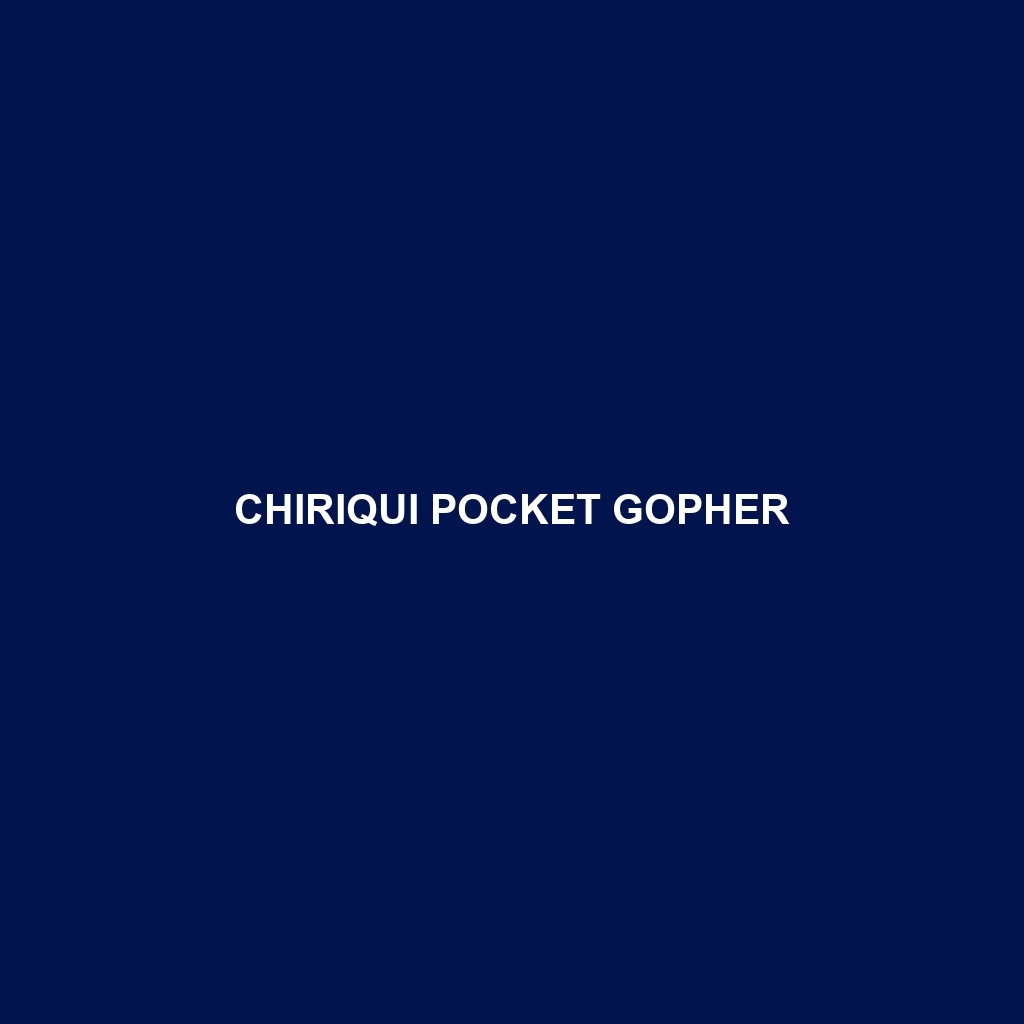Chiriqui Pocket Gopher (Scientific Name: )
Common Name: Chiriqui Pocket Gopher
Scientific Name:
Habitat
The Chiriqui Pocket Gopher is primarily found in the mountainous regions of western Panama, particularly in the Chiriquí Province. This rodent thrives in grasslands and open woodlands, where well-drained soil is prevalent. Its habitat typically features elevations ranging from 1,200 to 3,000 meters above sea level, allowing the species to adapt to cooler climates while providing necessary resources for survival.
Physical Characteristics
The Chiriqui Pocket Gopher is a medium-sized rodent, measuring approximately 20 to 30 centimeters in length. Its fur is usually a rich brown or gray, helping it blend into its terrestrial surroundings. Distinctive features include large, cheek pouches for food storage, strong front claws for digging, and a robust body shape that aids in burrowing activities.
Behavior
Chiriqui Pocket Gophers are predominantly solitary animals, known for their burrowing behavior that creates extensive underground tunnel systems. They are primarily nocturnal, foraging for food at night and retreating to their burrows during the day. Their behavior is characterized by their remarkable digging speed and skill, which allows them to evade predators effectively.
Diet
The diet of the Chiriqui Pocket Gopher consists mainly of grasses, roots, and tubers. They are herbivorous rodents, often engaging in feeding habits that include uprooting plants and consuming their fibrous parts. This foraging activity not only sustains their energy needs but also plays a crucial role in soil aeration and nutrient redistribution.
Reproduction
Chiriqui Pocket Gophers typically breed once or twice a year, with the breeding season occurring in the warmer months. A female usually gives birth to a litter of 2 to 6 pups after a gestation period of around 25 to 30 days. The young remain in the burrow for several weeks before emerging, and parental care is crucial during the early stages of their development.
Conservation Status
The current conservation status of the Chiriqui Pocket Gopher is classified as ‘Vulnerable’ according to the International Union for Conservation of Nature (IUCN). Habitat loss due to agricultural expansion and urban development poses significant threats to their populations, necessitating conservation efforts to protect their remaining habitats.
Interesting Facts
– The Chiriqui Pocket Gopher is an important ecosystem engineer, as their burrowing activities enhance soil quality and promote plant diversity.
– This species is known for its unique vocalizations, which are used for communication between individuals, especially during mating seasons.
Role in Ecosystem
Chiriqui Pocket Gophers play a vital role in their ecosystem by aiding in soil aeration and nutrient cycling. Their burrow systems create habitats for other small species, and their feeding activities help control plant populations, thereby contributing to the overall health of grassland and woodland environments.
This HTML-formatted species description incorporates relevant keywords and structured content while providing informative details about the Chiriqui Pocket Gopher.
